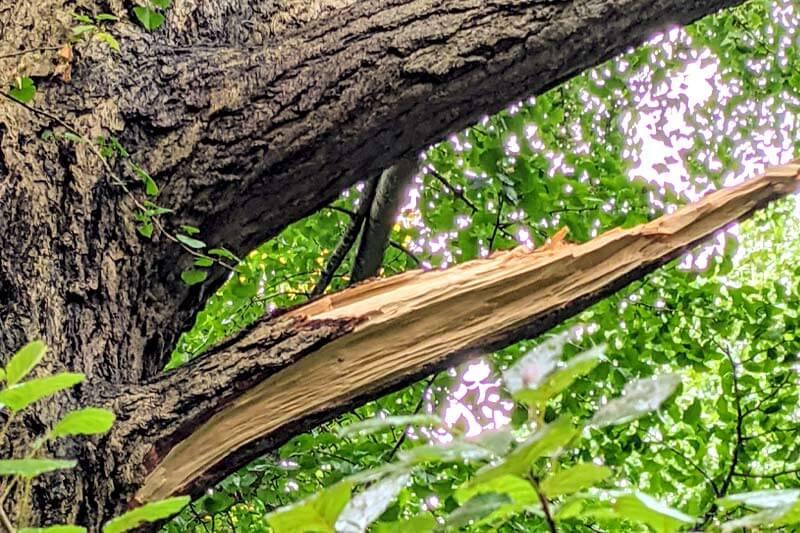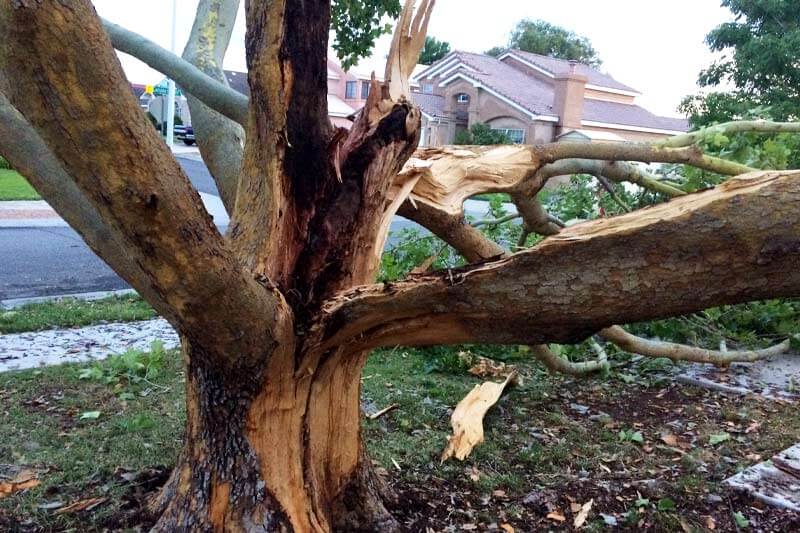Depending on the extent and the scale of the damage from the lightning strike, the steps to repair a lightning-struck tree can also depend. When a tree gets damaged, a visual inspection should be the first thing to do.
Checking the initial damage, without touching any of it, can give you an idea of what to do next. Oftentimes, after the visual inspection, it is recommended to seek professional advice.
Experts can assure both safety and quality supplements to your damaged tree. Not only will they bring their necessary equipment, but they will also provide you with the information on the necessary steps that you should take.

It depends. If the damage is not that drastic and intense, lightning-struck trees can survive and even thrive for a couple more years. Some trees can even survive after being struck on more than one occasion.
Can tree pruning repair lightning-struck trees?
For most lightning-strike trees, tree pruning can be done, especially when the harm of the lightning on the tree is not that serious.
Tree pruning involves trimming or removing the parts where the lightning has affected the tree. This involves the affected sections, but that does not necessarily mean that the tree is beyond saving.
By removing just the affected parts, the tree might stay alive. Sometimes, tree professionals will advise tree supplements and incorporate methods to support the tree’s recovery and health.
What if the tree cannot be saved?
If upon a visual inspection that is followed by a professional opinion, you learn that the tree should be removed after being struck by lightning, it might be best to say goodbye to it.
Aside from it being doomed, keeping a damaged tree can pose serious dangers to your property and its members especially when its debris gets carried whenever another storm comes.
Saving a tree, at most times, can be just a matter of swift action. Lightning-struck trees can live and thrive. Sometimes, most of them do not even require repair or rework.
However, by making sure that your area is safe and that your tree gets the extra care that it deserves, you might just give your property another shade for a couple more years.
Can a tree survive a lightning strike?
Luckily, not all lightning-struck trees will slowly die or be immediately doomed. A number of trees hit by lightning can survive, especially when the extent of the damage is not that grave.
However, it is important to note that all lightning-struck trees will or are experiencing stress and harmful effects on their anatomy, so it’s important to provide your tree with attention and extra care.
Here are some of the ways you can care for lightning-struck trees.
Pruning the tree
One of the ways to help your tree survive a lightning strike is to prune out damaged branches or parts or remove hanging pieces of bark. If you are unsure or reluctant to do this by yourself, you can seek a professional’s services to do so.
Supplemental fertilization
You can also consider giving supplemental fertilization to your damaged tree to help it support its growth and recovery and make sure that your tree gets enough water to help it grow stronger.
Inspect the tree often
Additionally, you should keep an eye on the tree for the next following weeks or months. If you see signs of recovery, you can continue supplementing it. If not, you might need to remove it.
Oftentimes, lightning-struck trees do not necessarily die. Some of them will receive significant damage, but they can still be saved with the proper methods and precautions.
How to tell if a tree was struck by lightning?
One of the most obvious signs of a lightning-struck tree is when a portion of the tree’s bark is torn, and the surface of the tree shows signs of burning, cracks, or any visible damage.
Apart from visible damage to the tree’s bark, you can also take notice of the tree’s leaves and their health. Most of the time, when lightning strikes trees, the health of the leaves gets withered or wilted.
In situations where the damage is not clear upon visual inspection, other long-term and underlying symptoms still may be present. To determine such may require you to seek the help of an arborist.
Recoverable foliage wilting, tree deterioration, and other long-term effects are some of the signs that arborists or expert tree inspectors can spot when they finally take a look at your lightning-struck tree.
Other signs may also include the following:
- Visible signs of cracks or splits that follow down the tree’s trunk
- Wilted or withered leaves, or gradual loss of health of the leaves
- Burned, blackened, or damaged in the bark of the tree
- Fallen or broken branches
After looking into and inspecting the extent of the damage to your tree, the tree inspector or the hired arborist can recommend a course of action to either repair or remove your tree, should there be a need to do such.

What happens when lightning strikes a tree?
Whenever lightning strikes a tree, it can cause damage to it in various ways. Most of the time, the tree will break, shatter, be burnt, or have a portion of its bark stripped off or damaged.
Normally, a lightning strike can occur in a split second, but this can cause long-term effects and problems to both your tree and your property.
While most of the lightning-struck trees only get damaged or affected to a degree where it does not die, some get fatal damage to the point that a tree removal might be necessary.
With this, property owners or people who have trees near their property will invest in a lightning protection system or adapt methods that help them protect their trees and their properties.
While these lightning protection systems can be expensive and elaborate, they come in handy and necessary to a point, since some lightning strikes can be deadly enough to harm your property and your family.











